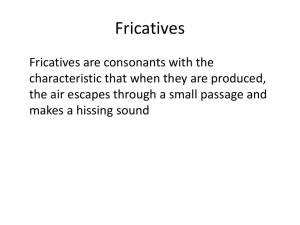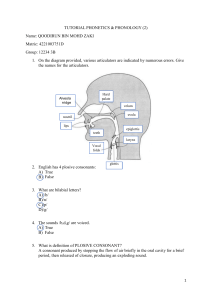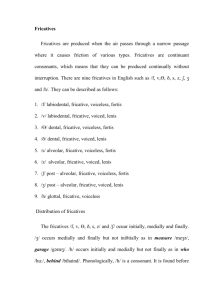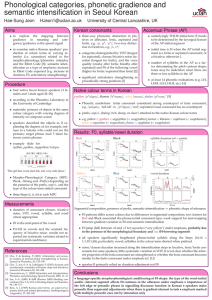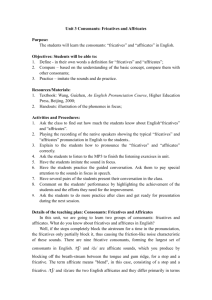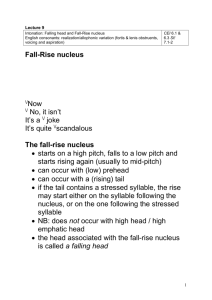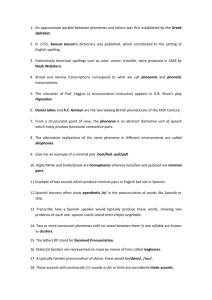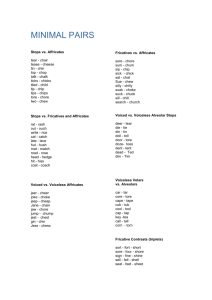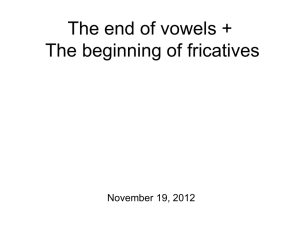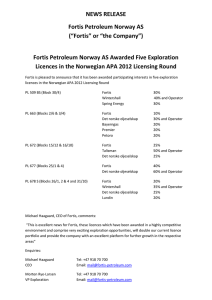LECTURE 6 FRICATIVES AND AFFRICATES Fricative is a
advertisement
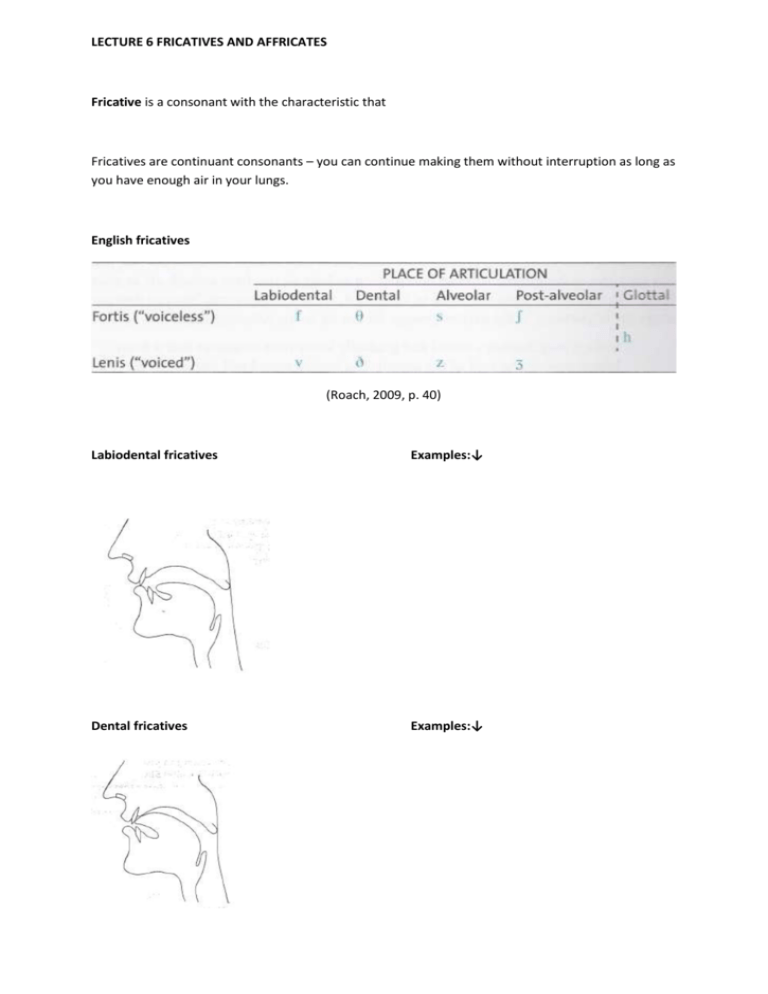
LECTURE 6 FRICATIVES AND AFFRICATES Fricative is a consonant with the characteristic that Fricatives are continuant consonants – you can continue making them without interruption as long as you have enough air in your lungs. English fricatives (Roach, 2009, p. 40) Labiodental fricatives Examples:↓ Dental fricatives Examples:↓ Alveoral fricatives Examples:↓ Post-alveoral fricatives Examples:↓ Glottal fricative [h] Many English native speakers are surprisingly sensitive about this consonant. Practically all English speakers omit the [h] sound in non-initial unstressed pronunciations of words such as her, he, him, his and the like. Each place of articulation has a pair of phonemes – one fortis and one lenis, with the exception of glottal. It is said that the fortis fricatives are articulated with greater force than lenis and their friction noise is louder. The fortis fricatives have the effect of FORTIS/LENIS DISTINCTION Each pair so far (excluding [h]), belong to pairs distinguished between fortis and lenis. What happens when [l], [m], [n], [ŋ] is followed by a fortis consonant such as [p], [t], [k]? Examples: belt [belt], bump [bʌmp], bent [bent], bank [bæŋk]. The effect on the continuant consonants is Affricates of English Affricate [ˈæfrɪkət] is a rather complex consonant – it begins as a plosive and ends as a fricative. When [tʃ] is final in the syllable, it has the effect of shortening a preceding vowel – the same way as other fortis consonants do. LIST OF RESOURCES Cruttenden, A. Gimson’s Pronunciation of English. Hodder Education, 2008. Crystal, D. A Dictionary of Linguistics and Phonetics. Blackvell Publishing, 2008. Davenport M. – Hannahs S. Introducing Phonetics and Phonology. Hodder Arnold, 2005. Richards, J. – Schmidt, R. Longman Dictionary of Language Teaching and Applied Linguistics. Longman, 2010. Roach, P. English Phonetics and Phonology. Cambridge University Press, 2009. Underhill, A. Learning and teaching pronunciation. Macmillan, 2005.
